Resources
About Us
3D Food Printing Market by Offering, Printing Method (Layer-by-layer, Mold-based), Printing Technology (Extrusion, Powder Binding Deposition), Ingredient Form (Pastes and Purees, Powdered Ingredients), End User, and Geography - Global Forecast to 2030
Report ID: MRSE - 104294 Pages: 298 May-2023 Formats*: PDF Category: Semiconductor and Electronics Delivery: 2 to 4 Hours Download Free Sample ReportThe 3D Food Printing Market is expected to reach $11.3 billion by 2030, at a CAGR of 50.2%, during the forecast period 2023–2030. The growth of the 3D food printing market is driven by the rising demand for gourmet food and the increasing use of 3D printing technology to produce plant-based meat alternatives and reduce food wastage.
However, the long processing times required to 3D print food products and the lack of flavor and texture compared to traditionally manufactured food products restrain the growth of this market. The growing demand for 3D food printing technology in the food & hospitality industries and increasing research initiatives to develop innovative 3D food printing models are expected to create market growth opportunities. However, limitations in ingredient processing and consumers’ higher preference for traditionally manufactured food products are major challenges for the players operating in the 3D food printing market.
Increased product customization across industries is a major trend in the 3D printing space. Product customization is the process of delivering customized goods as per customers’ needs. Mass customization of food products through 3D printing technology is advantageous for the food & hospitality industries. 3D printing is the most efficient for the mass customization of products. For example, 3D food printing allows food industries to create customized dairy products such as cake icing, chocolate, and cheese. While conventional manufacturing techniques require multiple machine setups and product-specific post-processing tools, 3D food printing supports various complex geometries without the manufacturer incurring the additional costs of customizing a product. Also, the customization of products through 3D food printing enhances structural integrity and allows for complex changes as per customer requirements.
Moreover, different participants in this market prioritize tailoring products to individual preferences. For example, in January 2021, Sugar Lab introduced 3D-printed chocolate truffles and bonbons. Utilizing 3D printing technology, the company created and personalized these exquisite desserts. The range of customized offerings from the company extends to candies, cupcake decorations, cocktail garnishes, and pastry shells. The company aims to develop culinary innovations and customization using 3D printing technology to expand its offerings in the industry and cater to the growing consumer demand for customized food products. In November 2021, Redefine Meat commercially launched the world’s first whole customized cuts of New Meat in Rehovot, Israel, under the first-ever category of plant-based whole cuts that offer product quality comparable to high-quality animal meat.
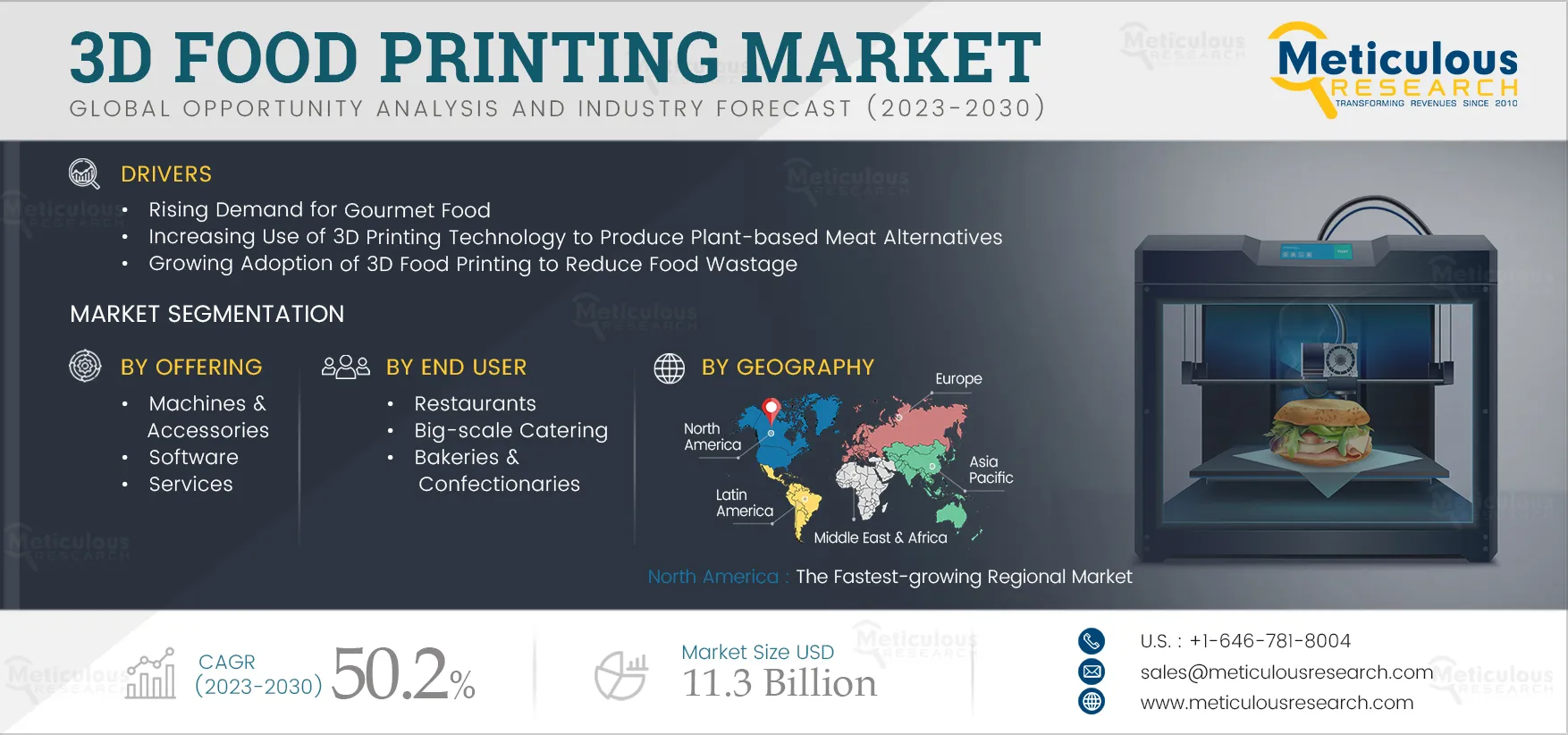
Click here to: Get a Free Sample Copy of this report
The Machines & Accessories Segment to Register the Highest CAGR During the Forecast Period
Based on offering, the 3D food printing market is segmented into machines & accessories, software, and services. The machines & accessories segment is projected to register the highest CAGR during the forecast period. The growth of this segment is driven by the wide usage of 3D printing technology in food industries for personalized nutrition, automated cooking, and reduction in food wastage, among other applications.
The Layer-by-layer Segment to Register the Highest CAGR During the Forecast Period
Based on printing method, the 3D food printing market is segmented into layer-by-layer and mold-based. The layer-by-layer segment is projected to register the higher CAGR during the forecast period due to the method’s wide usage in different applications, its ease of design, its ability to produce complex shapes, and the easy addition of specific ingredients selected as per customer preferences.
The Powder Binding Deposition Segment to Register the Highest CAGR During the Forecast Period
Based on printing technology, the 3D food printing market is segmented into extrusion, powder binding deposition, inkjet printing, and bio-printing. The extrusion segment is further sub-segmented into soft-materials extrusion, melting extrusion, and hydrogel-forming extrusion. The powder binding deposition segment is further sub-segmented into selective laser sintering, liquid binding, and selective hot air sintering and melting. The powder binding deposition segment is projected to register the highest CAGR during the forecast period. The growth of this segment is driven by various factors such as high production speed, automatic inclusion of support structures in layer fabrication, low-imaging specific energy, and complex 3D food fabrication.
The Powdered Ingredients Segment to Register the Highest CAGR During the Forecast Period
Based on ingredient form, the 3D food printing market is segmented into pastes and purees, powdered ingredients, and cells. The pastes and purees segment is further sub-segmented into dough, puree, jelly & frosting, mashed fruits & vegetables, cheese, and other pastes and purees. The powdered ingredients segment is further sub-segmented into sugar, chocolate powder, protein powder, flour, and other powdered ingredients. The powdered ingredients segment is projected to register the highest CAGR during the forecast period. The growth of this segment is driven by the rising demand for powdered ingredients-based 3D printed food products such as customized chocolate products and plant-based protein products.
The Restaurants Segment to Register the Highest CAGR During the Forecast Period
Based on end user, the 3D food printing market is segmented into restaurants, big-scale catering, bakeries & confectionaries, and other end users. The restaurants segment is further sub-segmented into QSR/fast food restaurants, casual dining restaurants, cafes, and fine dining/gourmet restaurants. The restaurants segment is projected to register the highest CAGR during the forecast period. The growth of this segment is driven by the rising demand for 3D-printed and customized foods in restaurants.
North America to Be the Fastest-growing Regional Market
Based on geography, the 3D food printing market is segmented into North America, Europe, Asia-Pacific, Latin America, and the Middle East & Africa. North America is slated to register the highest CAGR during the forecast period due to the region’s technological progress in all aspects of food technology, rapidly rising awareness regarding 3D-printed and plant-based meat products, and rising demand for vegan alternatives.
Key Players
The report includes a competitive landscape based on an extensive assessment of the key growth strategies adopted by the leading market participants in the 3D food printing market between 2020 and 2023. The key players profiled in the 3D food printing market report are 3D Systems Corporation (U.S.), TNO (Netherlands), Natural Machines (Spain), Wiiboox (China), byFlow B.V. (Netherlands), Dovetailed (U.K.), PancakeBot (U.S.), BeeHex, LLC (U.S.), Print4Taste GmbH (Germany), and Changxing Shiyin Technology Co., Ltd. (China).
Scope of the Report:
3D Food Printing Market Assessment, by Offering
3D Food Printing Market Assessment, by Printing Method
3D Food Printing Market Assessment, by Printing Technology
3D Food Printing Market Assessment, by Ingredient Form
3D Food Printing Market Assessment, by End User
3D Food Printing Market Assessment, by Geography
Key Questions Answered in the Report:
The 3D food printing market is projected to reach $11.3 billion by 2030 at a CAGR of 50.2% during the forecast period
The growth of this market is driven by the rising demand for gourmet food, the increasing use of 3D printing technology to produce plant-based meat alternatives, and the growing adoption of 3D food printing to reduce food wastage. Furthermore, the growing demand for 3D food printing technology in the food & hospitality industries and increasing research initiatives to develop innovative 3D food printing models are expected to create market growth opportunities.
Based on printing technology, the extrusion segment is expected to account for the largest share of the 3D food printing market. The large market share of this segment is attributed to the technology’s ability to achieve the output of conventional food extrusion processing physically with digitalized designs and personalized nutrition control.
The key players operating in the 3D food printing market are 3D Systems Corporation (U.S.), TNO (Netherlands), Natural Machines (Spain), Wiiboox (China), byFlow B.V. (Netherlands), Dovetailed (U.K.), PancakeBot (U.S.), BeeHex, LLC (U.S.), Print4Taste GmbH (Germany), and Changxing Shiyin Technology Co., Ltd. (China).
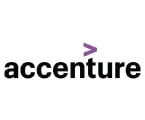





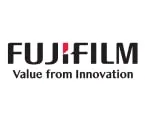

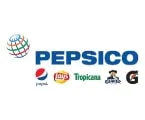
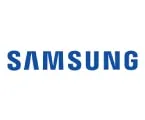





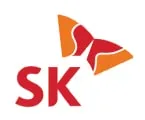
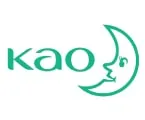

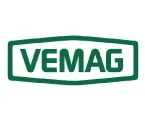
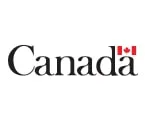

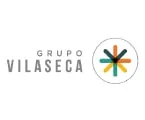


Published Date: Jul-2022
Published Date: May-2024
Please enter your corporate email id here to view sample report.
Subscribe to get the latest industry updates